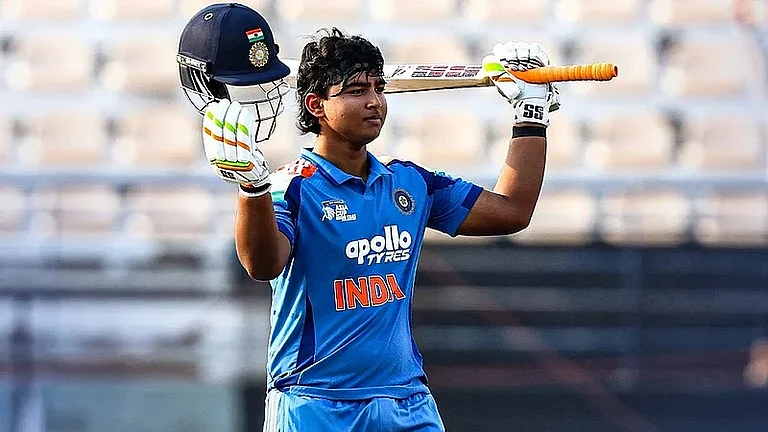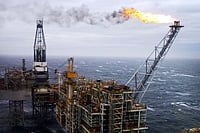The law had mandated that the price of power and the technical aspects of the project be cleared by the Central Electricity Authority (CEA). And Enron had made it clear it did not want the price it had set down examined by anyone. In particular, it wanted to do away with the CEA clearance, since that would have meant disclosing facts it would rather not. It was trying to sign the agreement with the Maharashtra State Electricity Board (MSEB) without the necessary "techno-economic" clearance of the CEA.
The MSEB also asked the CEA whether it could go ahead and simply sign an agreement with Enron for power purchase. The CEA wrote to the Government of India (GoI) stating that its "concurrence under Sector 31" was "statutory" and could not "be dispensed with".
The MSEB insisted that it should be allowed to sign the contract and thereafter seek clearance. In response, the CEA pointed out that the power purchase agreement would have to "specify the sale price of energy" as well as the "quantum of energy to be produced". Both these aspects had to be "examined by the CEA". It was possible that the CEA, after examining the project report, would suggest "modifications in respect of sale price" or in the "quantum of energy" to be produced. This could lead to a "breach of agreement". The CEA was also concerned about the need for such an increase of capacity in Maharashtra.
In March 1993, the quest for some sort of CEA clearance resumed in earnest. Enron submitted a document purporting to be a project report in April. The report did not reveal any of the critical parameters required for a project evaluation: cost of components, rate of interest, etc.
The cost of the project, at least as notified publicly, was Rs 9,053 crore, or Rs 4.49 crore per MW. In August 1993, the CEA conducted a detailed evaluation of the reasonable capital cost of such plants, which came out to be Rs 1.81 crore per MW.
The difference is astonishing, even after factoring in "other costs". It is pertinent to note that after five years, the ministry of power (MoP), in September 1997, officially conceded that the reasonable capital costs of such a power plant were in the range of Rs 1.8 crore/MW.
Bypass the CEA?
There was enormous pressure on the CEA from bureaucrats and politicians to clear the project, but there was no way it could be cleared in accordance with the law. A decision was then taken by Sharad Pawar, Maharashtra chief minister (CM), that the CEA would be bypassed completely and no heed given to the misgivings raised by the Authority or for that matter by the World Bank and others.
In August 1993, in a meeting, the CM put forth a proposition that issues like the "import of fuel", total "foreign exchange outgo" and tariff "were minor issues to be clarified", and that "the Foreign Investment Promotion Board (FIPB) would take a decision on them at the time of final review". But the Union minister for power explicitly stated that the "project need(ed) to be techno-economically appraised and cleared by the CEA before the MSEB signs any formal agreement with the company". This view seemed to have changed later.
On August 26, 1993, Rebecca Mark of Enron wrote to Pawar, stating: "The remaining concern seems to reside with Mr Beg, Member, Planning, Thermal Projects (CEA). He continues to hold up approval based on the question of demand for power in Maharashtra. No one from the MoP has given direction to Mr Beg to move forward on this issue." It is clear that Enron was asking Pawar to intercede and influence a statutory body in the discharge of its duties.
The CEA Receives a Letter
On November 11, 1993, the day before the CEA was to meet on Enron, it received a letter from the MoP, stating: "Finance Secretary (FS) observed that the question of cost of power had been looked into and it was more or less found in line with other projects being put up in Maharashtra."
Neither is the FS competent nor is he empowered by law or statute to examine this aspect. In any case, there were no similar projects in Maharashtra, India or anywhere in the world. The CEA was effectively being told not to examine the costs of the project. A decision had been taken at the highest levels to subvert the existing provisions of the law. The FIPB, a body that had neither the competence nor the legal authorisation, would consider the various "issues" and dispose of them.
This MoP letter has an interesting history. On November 3, 1993, the FS convened a meeting to discuss "the tariff for power proposed by Enron". The people present, as the minutes show, were from all concerned and unconcerned ministries. One of them was Ranjit Mathrani, whose appointment as finance adviser, MSEB, is one of those stories. In an internal secret note, a panel of secretaries of the Government of Maharashtra (GoM) had noted that there were problems associated with him due to a possible linkage in the securities scam. In September 1992, the MSEB had shortlisted a prestigious panel of international bankers to act as advisers in the negotiations with Enron where Mathranis company suddenly appeared, retrospectively, and Mathrani was "selected" in spite of having no experience in the power sector. Since then, Mathrani has been a "leading" consultant. Numerous reports on the power sector have been commissioned from his firm by the ministry of finance (MoF).
In the November 3 meeting, the FS sought a clarification on the "Internal Rate of Return (IRR) on equity assumed in the calculations". Mathrani said the "normal IRR to investors would be 25.22 per cent" and "assuming an inflation of 3-4 per cent, the real IRR would be 20.6 per cent at 80 per cent availability".
This means that the IRR was of the order of 32 per cent pre-tax. While the law allowed 16 per cent! Every 1 per cent return on equity represents a return of $8.5 million (Rs 28 crore) in a project of this size. The overall difference amounts to $140 million every year for a 20-year contract on this single count alone!
The chairman, MSEB, interjected to state that "in the negotiations they had attempted to bring down this rate but eventually accepted this figure".
A question was raised as to whether "this was an unreasonable rate of return". Mathrani stated "they were not competent to comment on capital costs" but "felt" that these "were not out of line". The chairman explained that the "costs" were "not viewed as substantially higher than those received through competitive bidding".
This general, unsubstantiated statement was accepted at face value. There was no examination of the cost of the project and deliberately false, arbitrary and misleading claims were being put forward. A general and dishonest statement, after having conceded that they were "not competent" to "comment on them" in the first place, was accepted and a false conclusion about costs being on par with other projects recorded.
The additional profits to Enron, over and above those allowed by the law, work out to $3 billion (Rs 10,000 crore) over the life of the contract.
The meeting ended by taking "note of the positive features of the project". Two days later, in the next FIPB meeting, it was recorded that: "FS observed that the question of cost of power had been looked into and it had been found that it was more or less in line with other projects in Maharashtra." In the same meeting, the power secretary "indicated" that CEA clearance "should be available in the week beginning November 8, 1993". The CEA, without having a chance to consider any aspect of the project, was being forced, or induced to grant clearance.
The CEAs Own Analysis
In its own analysis, the CEA noted that the permission given to Enron for foreign exchange repatriation was limited to a total annual outflow on all counts of $950 million. The difference between this amount and the actual minimum outflow in the first year ($1,334.18 million) is startling: 40 per cent over the permitted amount. It suggested that the MSEB needed to deal with this startling discrepancy.
Enron had given highly inflated capital costs for the project. On these inflated costs, as per the CEA, the return on equity worked out to "26 per cent in the 5th year increasing to 52 per cent during the 15th year". Every 1 per cent of return on equity translates to about Rs 30 crore a year. Due to the inflated capital costs, the actual equity brought into the project is less than claimed and the effective return on equity substantially higher. The return works out to be a few hundred per cent guaranteed in dollars for the next 20 years!
The annual difference between the tariff as allowed by law and Enrons privately negotiated tariff is around Rs 220 crore ($70 million) a year. Without the ad hoc incentive, the annual difference works out to Rs 500 crore, or $3,000 million (Rs 10,000 crore) over the life of the contract.
The CEA also found that a substantial amount of MSEBs own generating capacity would have to be backed down in order to accommodate the 90 per cent guarantee promised to Enron: 408 MW of MSEBs capacity, in the first year, costing 50-80 paise a unit, would be backed down to buy 695 MW of Enrons power at Rs 3.47 a unit.
The CEA repeatedly asked Enron to supply an itemisation of costs. The Dabhol Power Company replied: "Capital costs are irrelevant to CEA". In response to the CEA asking for specific components involving an expenditure of nearly $2.6 billion (Rs 9,000 crore), its response was: "Your request...cannot be supported and is not deemed necessary." This arrogance and total contempt for the law and legalities would have, at the least, seriously jeopardised business prospects in any other country save India.
The CEA Issues a "Clearance"
On November 12, 1993, the CEA met to consider the techno-economic clearance. According to the minutes of this meeting, the chairman stated that in view of the replies received from DPC in regard to cost estimates, clarification by the MoP on financial package and the examination of tariff aspects by MoF, examination by CEA would get limited to the technical aspects and need for the project which was already discussed. The chief engineer said in this background, the completed cost would not be considered by CEA at a later stage.
It was then decided that the MoP might be informed that since the power tariff from the project was a negotiated one and not in conformity with GoI notification and not related to the capital cost and cost of power, and these had been looked into by the MoF, only the technical aspects had ben looked into by the CEA and found generally in order.
The CEA analysis of the cost aspects of the Dabhol project resulted in an adverse conclusion on all counts. But faced with extraneous pressure to clear the project, the CEA abdicated its statutory responsibility. It acted in breach of its statutory duty by examining only the technical aspects, and deciding to accord only technical clearance.
The "Clearance"
Ten days later, in their letter of November 23, 1993, the MoP told the DPC that it would "expedite consideration of all clearances which fall within" its "competence". It also went on to give a blanket undertaking that it would "ensure that your application for such clearances are approved".
On November 26, 1993, the CEA gave clearance subject to certain conditions. In their letter, the CEA specified: "Aspects relating to import of fuel, foreign exchange outgo and deviation from GoIs notification including return on equity was looked into by FIPB and found acceptable by them."
On December 2, 1993, the secretary (energy), GoM, issued a note enclosing CEAs letter, holding that "this letter conveys full and final techno-economic clearance" and that "the project has been fully scrutinised by the GoI who have now issued their final clearance". Two days before the power purchase agreement (PPA) was to be signed, the MSEBs solicitors clarified it was no clearance at all. They suggested an appropriate administrative notification could be issued to legalise the illegal retroactively. The project thus went through on a non-existent full "techno-economic clearance". The PPA was signed the week after.


























